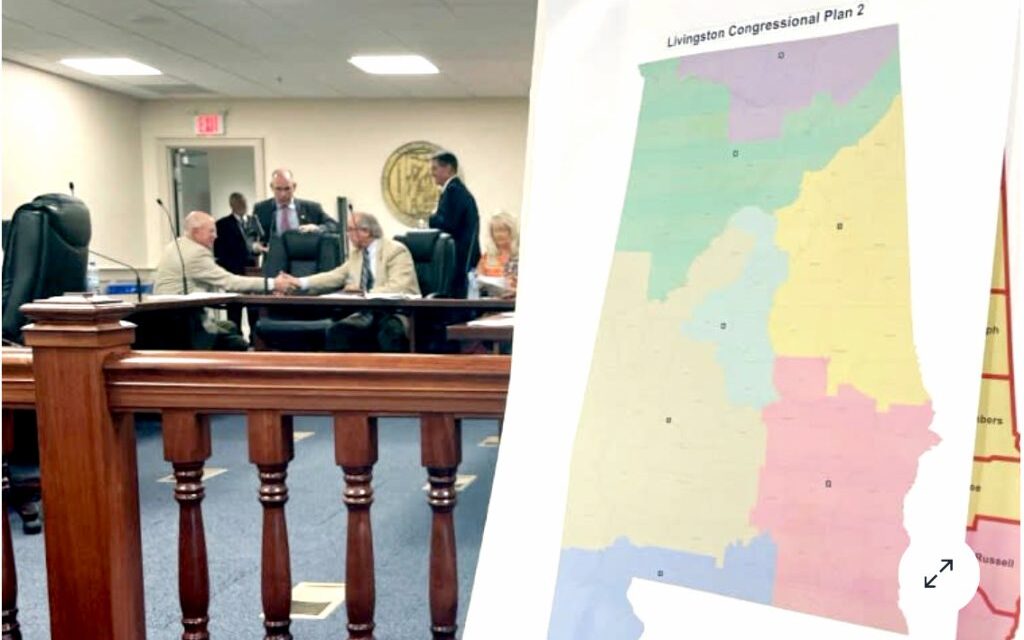By Mike Cason
(PAUL GATTIS)
The U.S. Supreme Court today declined to block a ruling by a three-judge district court that is preparing to draw a new congressional map for Alabama to use in next year’s elections.
In a one-sentence order, the justices denied Alabama’s request for an emergency stay on the ruling by the three-judge court, which found the map approved by the Legislature in July likely violates the Voting Right Act.
The three-judge district court ordered a cartographer and special master it has appointed to submit three proposed maps. Special Master Richard Allen submitted three proposed maps Monday.
Parties in the case will have three days to file objections to the proposed maps.
On Sept. 5, the three-judge court ruled in favor of the organizations and Black voters who said the Republican-controlled Legislature defied their instructions that the map should have a second district where Black voters have an opportunity to elect a candidate of their choice.
The Legislature’s new map left District 7 in west Alabama as the only majority Black district out of seven in a state where one-fourth of residents are Black.
The state’s lawyers argued that its map follows redistricting principles of keeping communities of interest together, compactness, and minimizing splits of county lines. The state said the court’s instructions would have required a racially gerrymandered map.
The three-judge court has scheduled a hearing for Oct. 3. Secretary of State Wes Allen has told the court the state needs a new map ready by early October to prepare for next year’s elections.
In a report to the court on Monday, Special Master Richard Allen said his three proposed maps all create a second opportunity district for Black voters. That is in District 2, which would have a Black voting age population of close to 50% on all three plans.
An analysis of 17 recent elections including with the report shows that the Black-preferred candidate would have won most of the time.
Most of the substantial changes on Allen’s proposed are to Districts 1 and 2. Allen’s report said two of the three proposals are variations of a map proposed by the plaintiffs in the case during the legislative session.
Allen’s proposed maps, drawn by court-appointed cartographer David Ely, all retain District 7 as a majority Black district, as it has been since 1992.
The dispute started in 2021 when the Legislature passed a new map, as it does after every census. Three groups filed separate lawsuits challenging map.
In January 2022, the three-judge court held a seven-day hearing and ruled that the 2021 map likely violated the Voting Rights Act. The U.S. Supreme Court affirmed that ruling in June 2023, sending the case back to the three-judge court.
The court gave the Legislature a chance to pass a new map, which lawmakers did in July. But the plaintiffs challenged that map, too. The judges held a hearing Aug. 14 and ruled Sept. 5 that the new map did not fix the likely Voting Rights Act violation.
The Milligan plaintiffs, who were represented by the NAACP Legal Defense Fund and others, issued a statement about the Supreme Court’s denial of the stay.
“It has been a long and frustrating battle holding the Alabama legislature accountable, but today it is a rewarding one,” they said. “Even after the highest court in the land sided with Black voters in June, our elected officials still chose power over people by outright defying multiple court orders, and the loud cries of their constituents to do the right thing.
“Despite these shameful efforts, the Supreme Court has once again agreed that Black Alabamians deserve a second opportunity district. This additional representation in Congress will undoubtedly change lives, especially for the hundreds of thousands of Alabamians residing in the Black Belt who suffer from lack of healthcare access, job opportunities, and crumbling infrastructure. We look forward to a new era in our state’s history, in which power is shared and Black voices are heard.”











